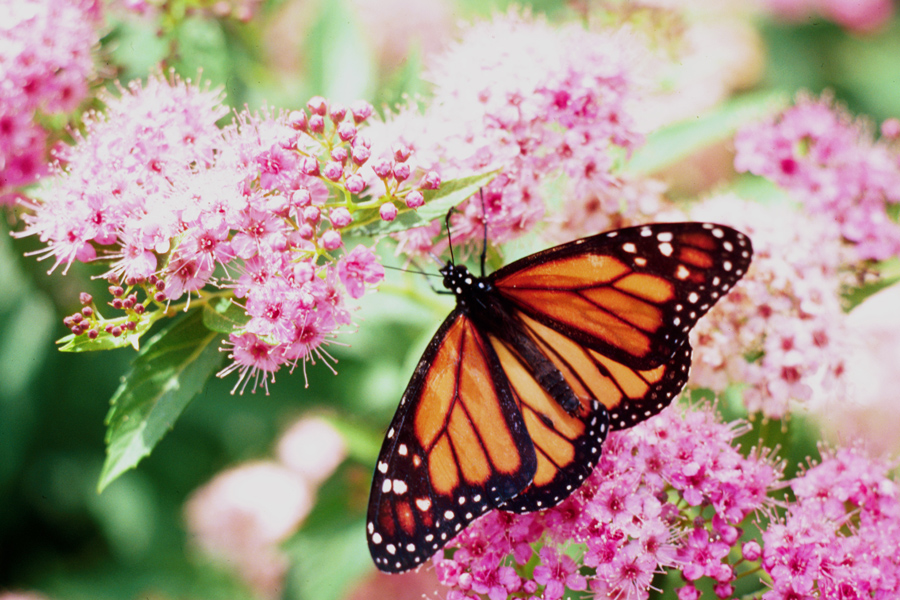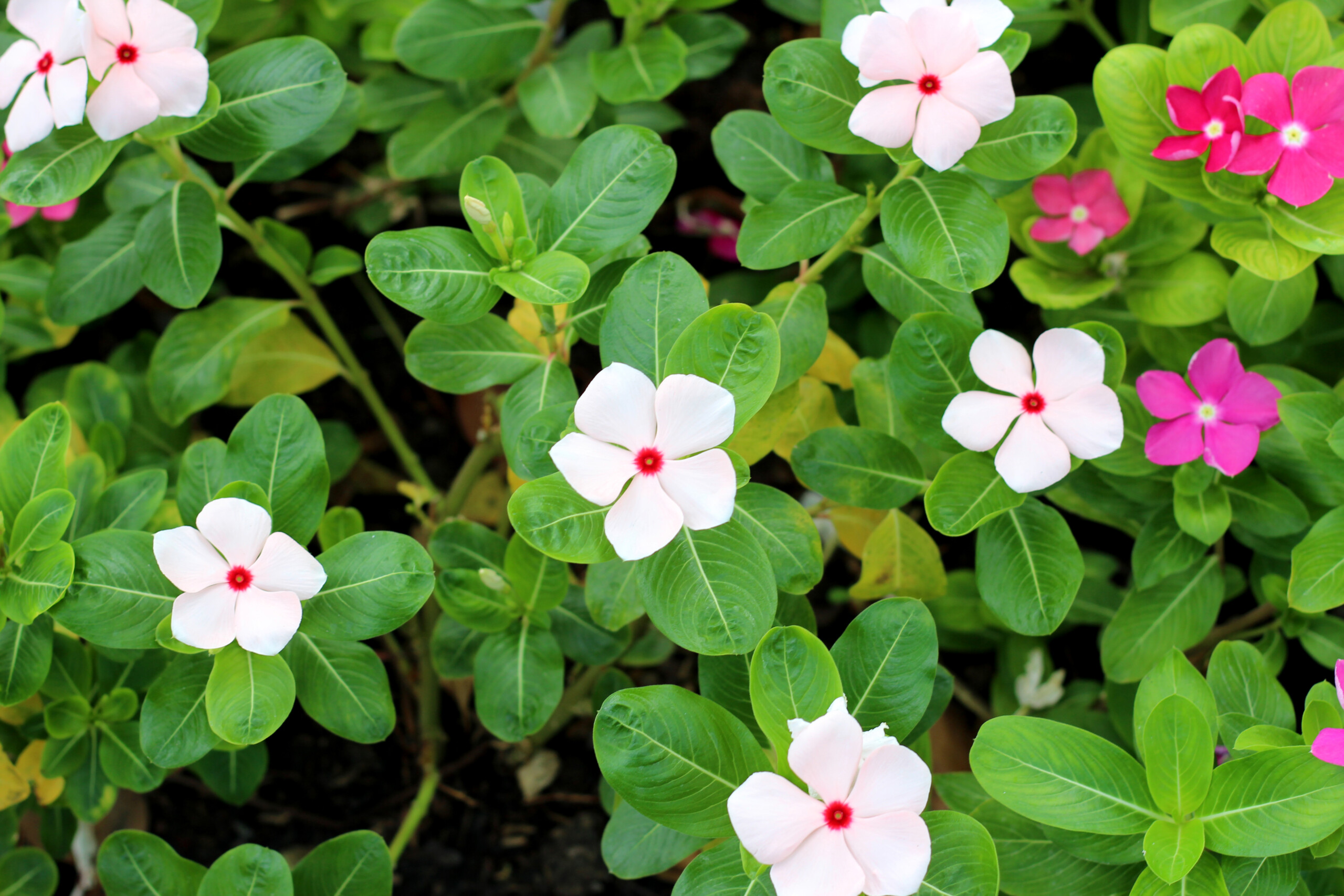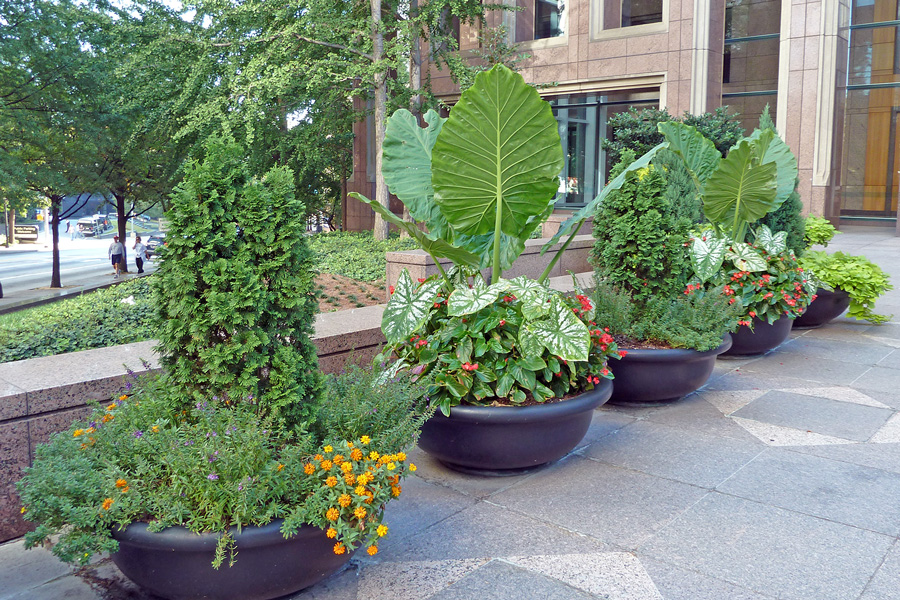Flowers
-

A classic example of a North American species that undergoes a great migration is the monarch butterfly, Danaus plexippus Linnaeus. Monarchs travel on air currents and cross more than 3000 miles in winter to reach their overwintering sites. Monarch butterfly populations are showing a declining trend. As the overwintering habitat in Mexico is destroyed by logging or deforestation activities, they have fewer and fewer places to overwinter. Other factors contributing to their decline such as diseases, pesticide use, and loss of larval hosts (i.e., milkweed) are on the rise. The larvae need milkweed to develop, and the adults need nectar for migration and survival day-to-day, so more nectar sources and milkweed plants are needed to sustain their migration patterns. More flowering plants and milkweeds can help conserve the migrating monarchs, especially when planted along farm-reserved lands and urban gardens.
William Hudson and Shimat Joseph
|
-

SB 48-06
Home Fungicide Guide
This section of the Home & Garden Edition covers fungicides for use in and around your home. Beginning in 2022, the Home & Garden Edition has been updated biennially. When purchasing a product based on a first-year recommendation of the Handbook, check the current product label before purchase to be sure it is still labeled for the use for which you are buying it. For pesticide products you have on hand from earlier purchases, you are allowed to use them until they are depleted without penalty under the law. Always follow label instructions before use. Contact the product’s manufacturer for the most up-to-date label.
Harald Scherm and Allison Johnson
|
-

B 910
Hobby Greenhouses
The gardener who has a greenhouse can extend or intermingle the seasons at will. Whether you wish to build your own greenhouse from scratch or purchase a prefabricated structure ready for assembly, this publication explains everything you need to know about building and maintaining a hobby greenhouse. This publication also includes several building design plans.
John Worley and Rhuanito Ferrarezi
|
-

This publication provides guidelines for the planting and care of pansies to ensure success, including planting time, bed preparation, plant spacing, planting procedures, fertilization, freeze protection, and common insect and disease problems. Since seasonal color is a high-cost investment in the landscape, it is important to get the maximum return on your investment by following these planting and cultural guidelines.
Svoboda Pennisi
|
-

This publication is devoted specifically to covering everything you need to know about growing herbaceous perennials, primarily to those that persist from crowns and/or fleshy roots.
Svoboda Pennisi
|
-

B 790
Geraniums
Geraniums are among the most popular flowering plants grown in the United States. They are easy to grow and can be used in many types of gardens, such as ground beds, planter boxes, hanging baskets and pots. They are ideal for flanking entrance-ways and adding color to border plantings. This publication explains everything you need to know about growing geraniums.
Svoboda Pennisi
|
-

Vinca is a specialty ornamental crop with very distinct requirements. This bulletin will address those requirements and cover a typical production schedule and crop budget.
Jean Williams-Woodward and Svoboda Pennisi
|
-

The silverleaf whitefly, also known as the sweet potato whitefly or Bemisia tabaci (Hemiptera: Aleyrodidae), attacks a wide range of plants, from ornamentals to warm-season vegetables. Whiteflies are active from mid-July to mid-October and are found gathered together on the underside of leaves during the daytime. Although 76 whitefly species are known to exist in the Southeastern U.S., only a few species cause serious problems in greenhouses and nurseries. These species include the greenhouse whitefly (Trialeurodes vaporariorum), banded wing whitefly (Trialeurodes abutiloneus), giant whitefly (Aleurodicus dugesii), citrus whitefly (Dialeurodes citri), cloudywinged whitefly (Dialeurodes citrifolii), and the silverleaf or sweet potato whitefly. Among several whitefly species, the silverleaf whitefly, particularly biotype B, is the most common and most destructive whitefly species in
nurseries in the Southeastern U.S.William Hudson, Shimat Joseph, and Rehan Arshad
|
-

This publication offers information on types of plants suitable for mixed containers, with an emphasis on perennial and woody species and cultivars, as well as aesthetic qualities, cultural conditions and placement within the container.
Svoboda Pennisi and Matthew Chappell
|